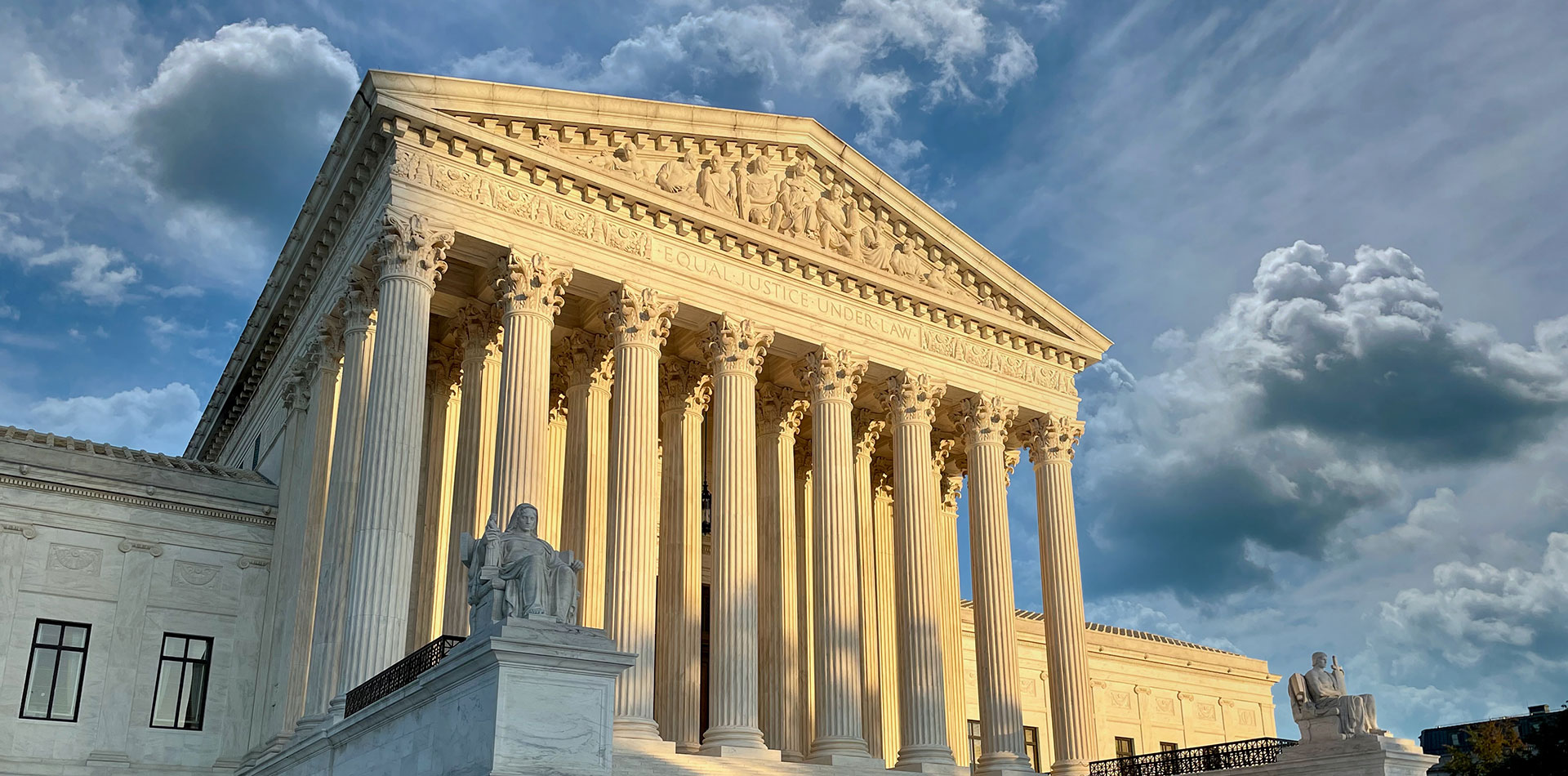How the Supreme Court narrowed the consideration of indirect and cumulative effects under NEPA.
The Supreme Court issued its decision in the much anticipated Seven Counties Infrastructure Coalition v. Eagle County case, providing clear direction to agencies that they should narrow their study of environmental effects under the National Environmental Policy Act (NEPA) to those with effects that directly result from the proposed action. The Supreme Court decision is very clear in some regards but also leaves open some flexibility for interpretation, which we’ll discuss below. The bottom line up front: agencies developing NEPA documents should use their discretion when narrowing the scope of their analysis to those effects that indirectly result from the proposed action and over which they have authority to approve or disapprove. We’ll unpack that a bit more as we go.
First, some background and context.
The case in question dealt with an 88-mile railway extension in the Uinta Basin in Utah connecting an isolated area rich with petroleum deposits to the national rail network. The Surface Transportation Board (STB) was the agency responsible for approving the project and, thus, the lead agency responsible for conducting the NEPA analysis.
In the 3,600-page environmental impact statement prepared by the STB, the agency acknowledged that the new rail line may result in an increase in oil recovery in the Uinta Basin and that the oil transported from that basin to refineries would likely produce adverse climate effects, but it did not evaluate those impacts in detail, having determined that such effects were not subject to their authority and were outside the scope of the proposed action. (The Court referred to these separate actions as “upstream” and “downstream” projects.) Plaintiffs, including Eagle County Colorado (through which the crude oil would pass on its way to refineries on the Gulf Coast) and environmental groups argued that the STB should have done a more thorough analysis of the effects of increased oil production in the Uinta Basin resulting from the rail line as well as the effects of increased oil refinement from the increased production. The U.S. Court of Appeals for the District of Columbia agreed with the plaintiffs, which prompted the appeal to the Supreme Court and the reversal decision we’re discussing here.
Considering the revocation of the Council on Environmental Quality’s NEPA implementing procedures and the corresponding elimination of “cumulative” and “indirect” effects as defined in those regulations, it is reasonable to expect that agency NEPA analyses will focus almost entirely on the proposed action and the potential direct environmental effects.
Seven Counties Infrastructure Coalition v. Eagle County Case Decision
The decision is notable for a number of reasons—not the least of which is that it was unanimous, with the liberal justices issuing a separate concurring opinion with the conservative majority. Writing for the majority, Justice Kavanaugh repeatedly asserted that the courts should provide deference to agency decision-making and that NEPA “is purely procedural” and that the “goal of the law is to inform agency decision-making and not paralyze it.”
Substantively, the decision provides clear direction to agencies when considering the scope of analysis for a proposed action in two primary buckets:
1. Agencies are not required to evaluate the effect of actions that are outside of their authority to approve or disapprove and must exercise discretion on evaluating effects that are distant in time or geography from the proposed action. This reaffirms a prior court decision Department of Transportation v. Public Citizen, that, as Justice Sotomayor summarized in her concurring opinion found that: “an agency is not responsible for environmental impacts it could not lawfully have acted to avoid, either through mitigation or by disapproving the federal action.” Taken further, the Court’s decision here will help to constrain the area of analysis for proposed actions to those effects that are directly related to the project, either through direct or potentially indirect effects, with the latter subject to greater scrutiny. In the majority opinion, Justice Kavanaugh wrote that “…it is critical to disaggregate the agency’s role from the court’s role. So long as the EIS addresses environmental effects from the project at issue, courts should defer to agencies’ decisions about where to draw the line – including (i) how far to go in considering indirect environmental effects from the project at hand and (ii) whether to analyze environmental effects from other projects separate in time or place from the project at hand.”
2. Agencies are not required to evaluate “upstream” or “downstream” projects that are separate from the proposed action. Similar to the point above, the decision is clear that agencies need not focus their analysis on separate and distinct projects that may or may not occur following implementation of the proposed action. Justice Kavanaugh writes that “…when the effects of an agency action arise from a separate project – for example a possible future project or one that is geographically distinct from the project at hand – NEPA does not require the agency to evaluate the effects of that separate project.” Citing prior case law, he goes on to emphasize that “[u]nder NEPA,…a mere ‘but for’ causal relationship is insufficient to make an agency responsible for a particular effect.”1
3. Courts should defer to agencies on where they “draw the line” for the scope of analysis. Here, Justice Kavanaugh drew a distinction between the court’s decision in Loper Bright v. Raimondo and asserted that agency discretion when authorized by statute is subject to the “arbitrary and capricious” standard of the Administrative Procedures Act. As such, courts should not question the decision itself but rather whether the decision was reasonable and reasonably explained. With this distinction, the Court reasserts substantial deference to agency decision-making, on a case-by-case basis to determine the extent of analysis necessary to inform a final agency action. Driving it home, Justice Kavanaugh wrote, “[i]n short, when determining whether an agency’s EIS complied with NEPA, a court should afford substantial deference to the agency.”
So, what does this mean for the state of practice in NEPA?
Considering the revocation of the Council on Environmental Quality’s NEPA implementing procedures and the corresponding elimination of “cumulative” and “indirect” effects as defined in those regulations, it is reasonable to expect that agency NEPA analyses will focus almost entirely on the proposed action and the potential direct environmental effects. The tenuous linkage between a proposed road and “induced growth,” for example, will be scrutinized and potentially excluded from analysis, based on the agency’s best judgment.
This is not to say that all indirect effects are excluded. For example, if a gas-fired power plant were looking to expand operations on Bureau of Land Management land, the downstream effects on fisheries from thermal pollution flowing from the power plant, although separated by time and geography, would still result from the power plant and would be subject to the NEPA analysis. In contrast, the environmental effects of extracting and transporting natural gas to the power plant would be outside the scope of analysis for the BLM, as the agency has no authority over natural gas extraction and transport outside of BLM lands.
Ultimately, this will help narrow the focus of NEPA documents, but it could create conflicts with state-level environmental documents that may explicitly require consideration of “growth-inducing impacts,” such as the California Environmental Quality Act (CEQA). Here, the federal shift away from cumulative and a broad evaluation of indirect effects may create circumstances where state environmental documents are finding significant effects where a federal environmental document may not. This will make it harder to achieve efficiencies through combining those reports and could create new challenges to complying with diverging areas of focus for state and federal environmental laws.
It is a dynamic time in NEPA implementation that is trending toward a strict constructionist interpretation of the statute. This focus on direct effects within the authority of the lead agency will help to achieve the statutory timelines and page limits by excluding some indirect and cumulative effects that agencies’ have sometimes included in the past. We may see this defined in new agency implementing procedures expected within the year. This new constrained approach is, as Justice Kavanaugh framed it, “a course correction” that will take some time to fully figure out.
For more news related to ongoing federal permitting policy changes, be sure to peruse our Federal 2025 blog and explore ESA’s free Permitting Policy Tracker as a tool to help navigate through the changes affecting the environmental consulting industry. You can also email Eric Beightel, ESA’s Federal Strategy Director, for specific questions.









